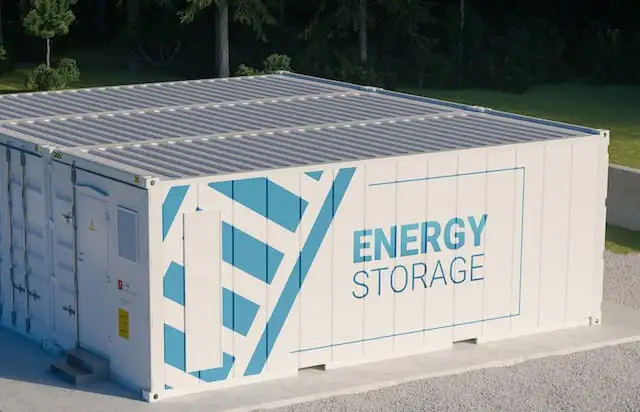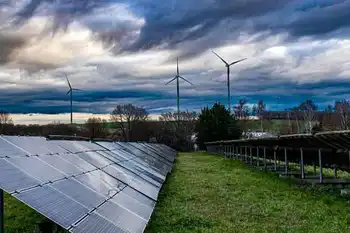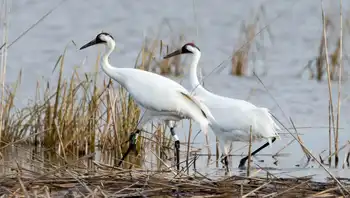Enabling storage in Ontario's electricity system

NFPA 70b Training - Electrical Maintenance
Our customized live online or in‑person group training can be delivered to your staff at your location.

- Live Online
- 12 hours Instructor-led
- Group Training Available
OEB Energy Storage Integration advances DERs and battery storage through CDM guidelines, streamlined connection requirements, IESO-aligned billing, grid modernization incentives, and the Innovation Sandbox, providing regulatory clarity and consumer value across Ontario's electricity system.
Key Points
A suite of OEB initiatives enabling storage and DERs via modern rules, cost recovery, billing reforms, and pilots.
✅ Updated CDM guidelines recognize storage at all grid levels.
✅ Standardized connection rules for DERs effective Oct 1, 2022.
✅ Innovation Sandbox supports pilots and temporary regulatory relief.
The energy sector is in the midst of a significant transition, where energy storage is creating new opportunities to provide more cost-effective, reliable electricity service. The OEB recognizes it has a leadership role to play in providing certainty to the sector while delivering public value, and a responsibility to ensure that the wider impacts of any changes to the regulatory framework, including grid rule changes, are well understood.
Accordingly, the OEB has led a host of initiatives to better enable the integration of storage resources, such as battery storage, where they provide value for consumers.
Energy storage integration – our journey
We have supported the integration of energy storage by:
Incorporating energy storage in Conservation and Demand Management (CDM) Guidelines for electricity distributors. In December 2021, the OEB released updated CDM guidelines that, among other things, recognize storage – either behind-the-meter, at the distribution level or the transmission level – as a means of addressing specific system needs. They also provide options for distributor cost recovery, aligning with broader industrial electricity pricing discussions, where distributor CDM activities also earn revenues from the markets administered by the Independent Electricity System Operator (IESO).
Modernizing, standardizing and streamlining connection requirements, as well as procedures for storage and other DERs, to help address Ontario's emerging supply crunch while improving project timelines. This was done through amendments to the Distribution System Code that take effect October 1, 2022, as part of our ongoing DER Connections Review.
Facilitating the adoption of Distributed Energy Resources (DERs), which includes storage, to enhance value for consumers by considering lessons from BESS in New York efforts. In March 2021, we launched the Framework for Energy Innovation consultation to achieve that goal. A working group is reviewing issues related to DER adoption and integration. It is expected to deliver a report to the OEB by June 2022 with recommendations on how electricity distributors can assess the benefits and costs of DERs compared to traditional wires and poles, as well as incentives for distributors to adopt third-party DER solutions to meet system needs.
Examining the billing of energy storage facilities. A Generic Hearing on Uniform Transmission Rates is underway. In future phases, this proceeding is expected to examine the basis for billing energy storage facilities and thresholds for gross-load billing. Gross-load billing demand includes not just a customer’s net load, but typically any customer load served by behind-the-meter embedded generation/storage facilities larger than one megawatt (or two megawatts if the energy source is renewable).
Enabling electricity distributors to use storage to meet system needs. Through a Bulletin issued in August 2020, we gave assurance that behind-the-meter storage assets may be considered a distribution activity if the main purpose is to remediate comparatively poor reliability of service.
Offering regulatory guidance in support of technology integration, including for storage, through our OEB Innovation Sandbox, as utilities see benefits across pilot deployments. Launched in 2019, the Innovation Sandbox can also provide temporary relief from a regulatory requirement to enable pilot projects to proceed. In January 2022, we unveiled Innovation Sandbox 2.0, which improves clarity and transparency while providing opportunities for additional dialogue.
Addressing the barriers to storage is a collective effort and we extend our thanks to the sector organizations that have participated with us as we advanced these initiatives. In that regard, we provided an update to the IESO on these initiatives for a report it submitted to the Ministry of Energy, which is also exploring a hydrogen economy to support decarbonization.











